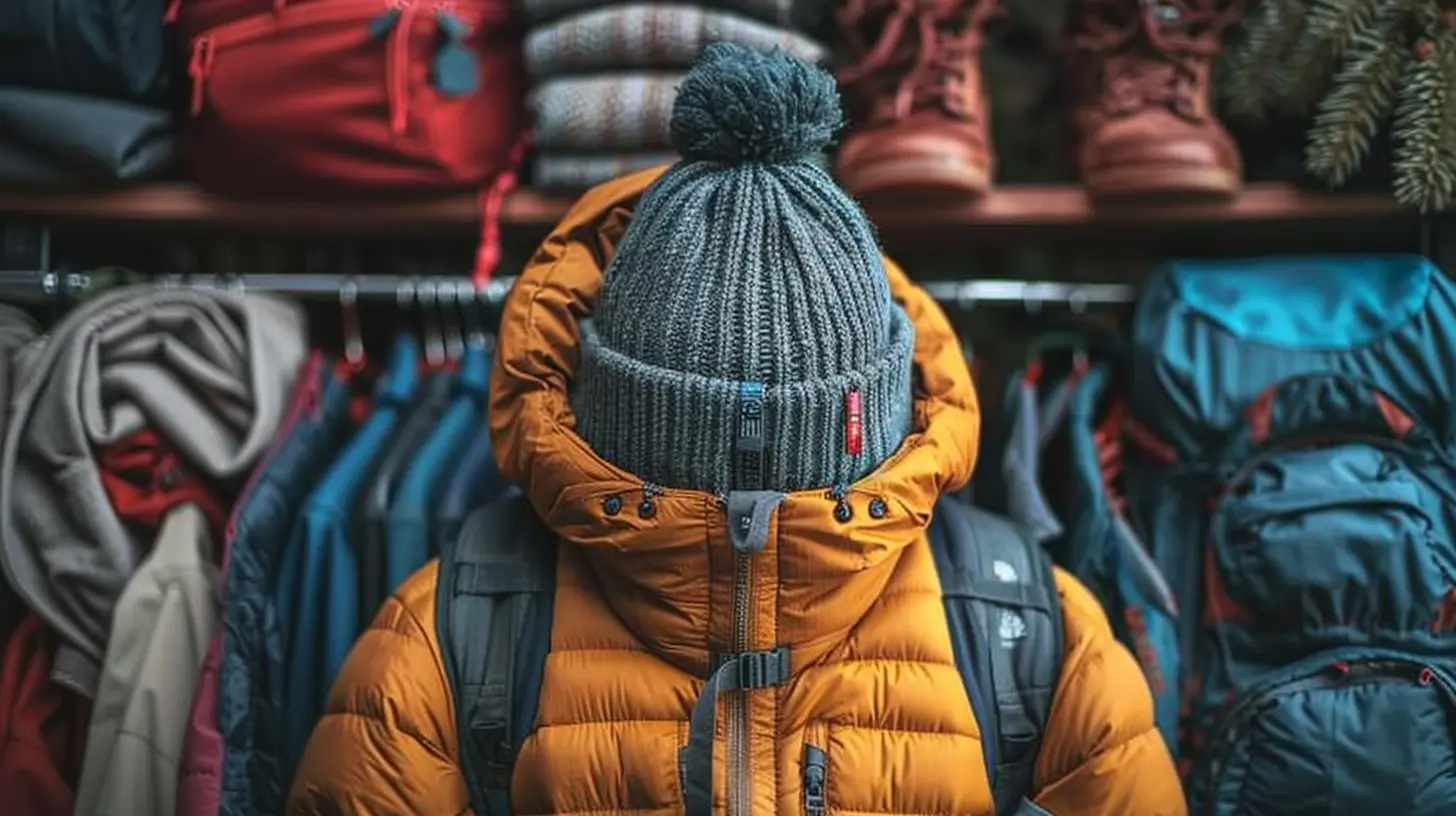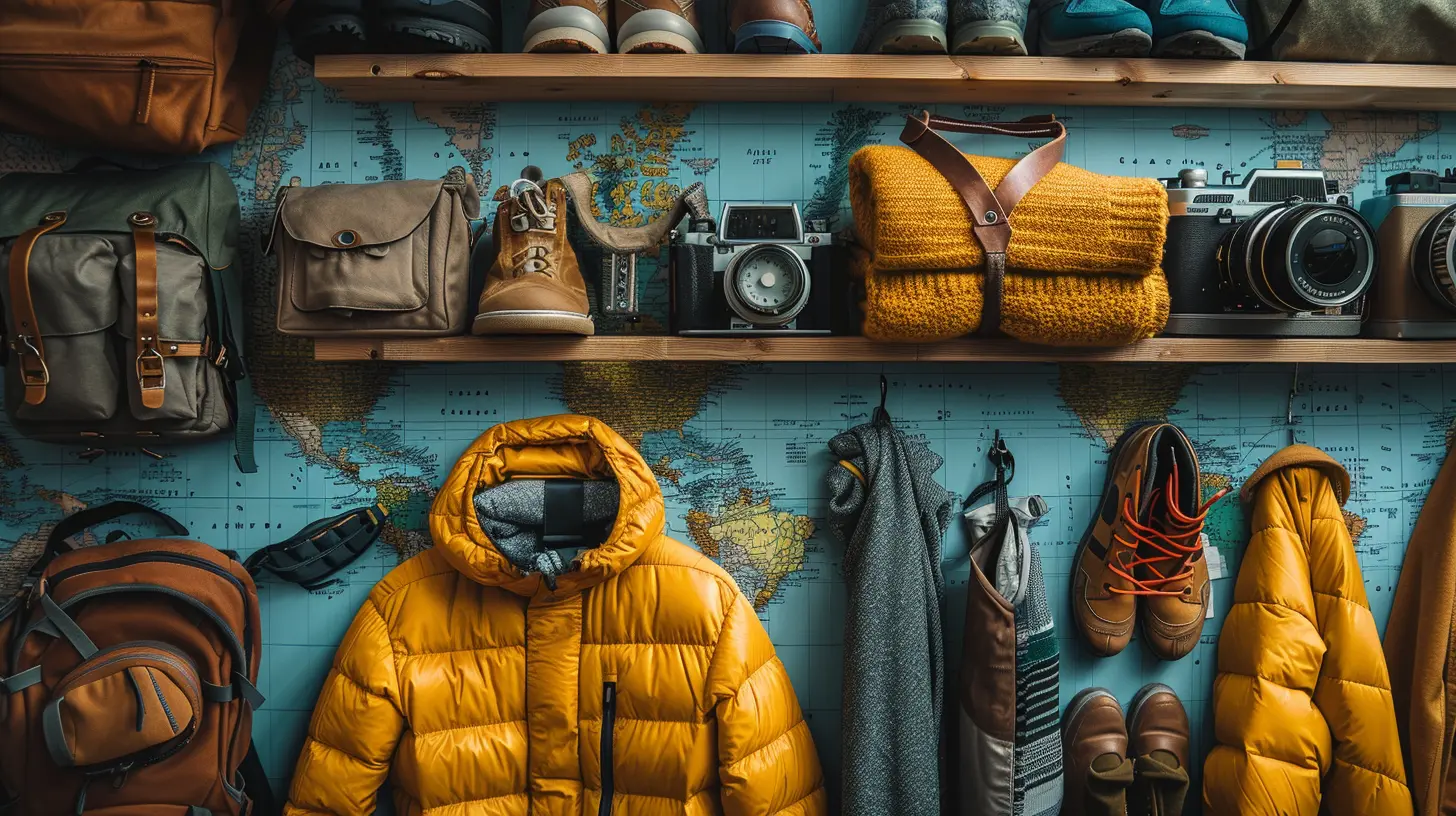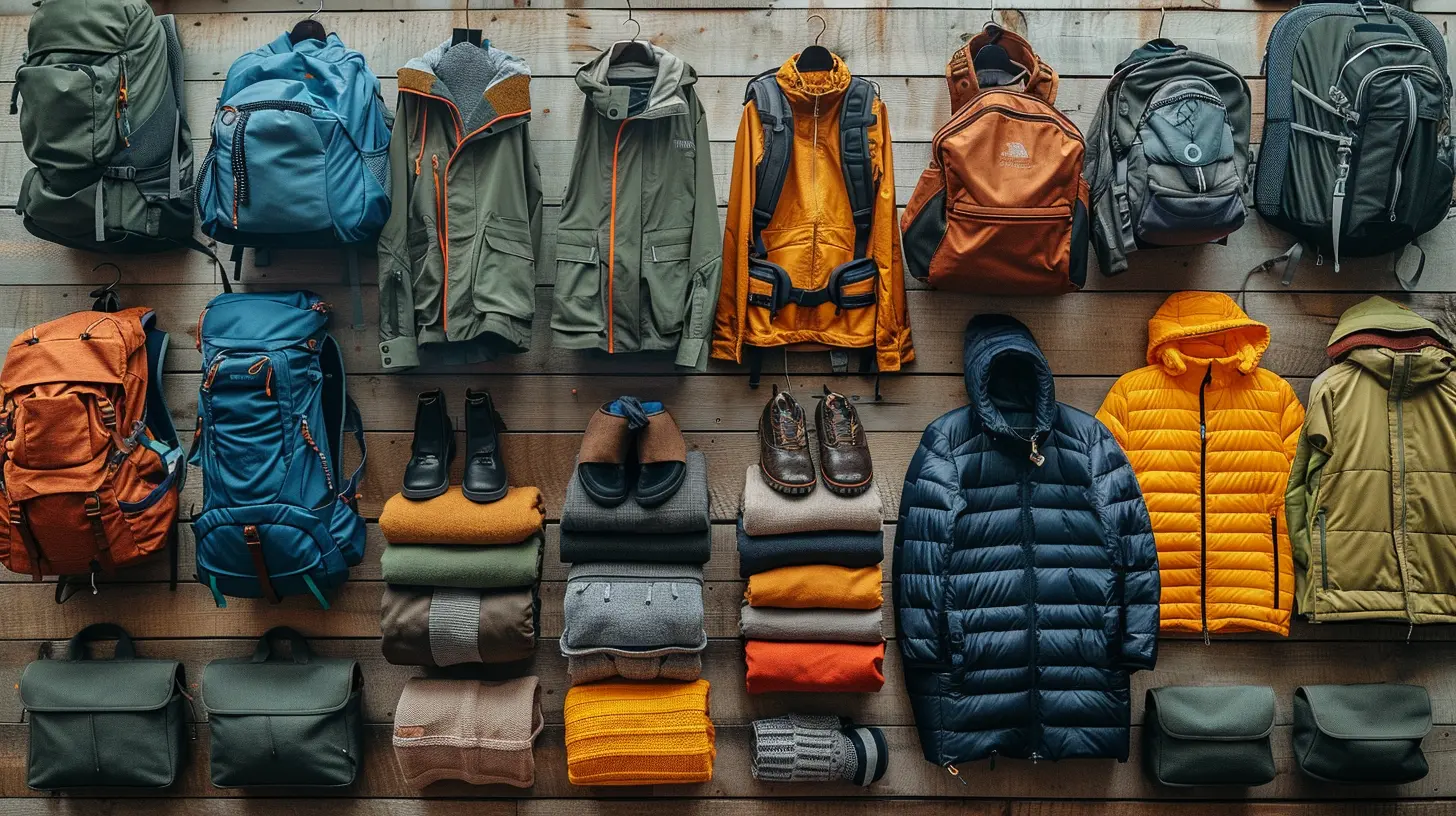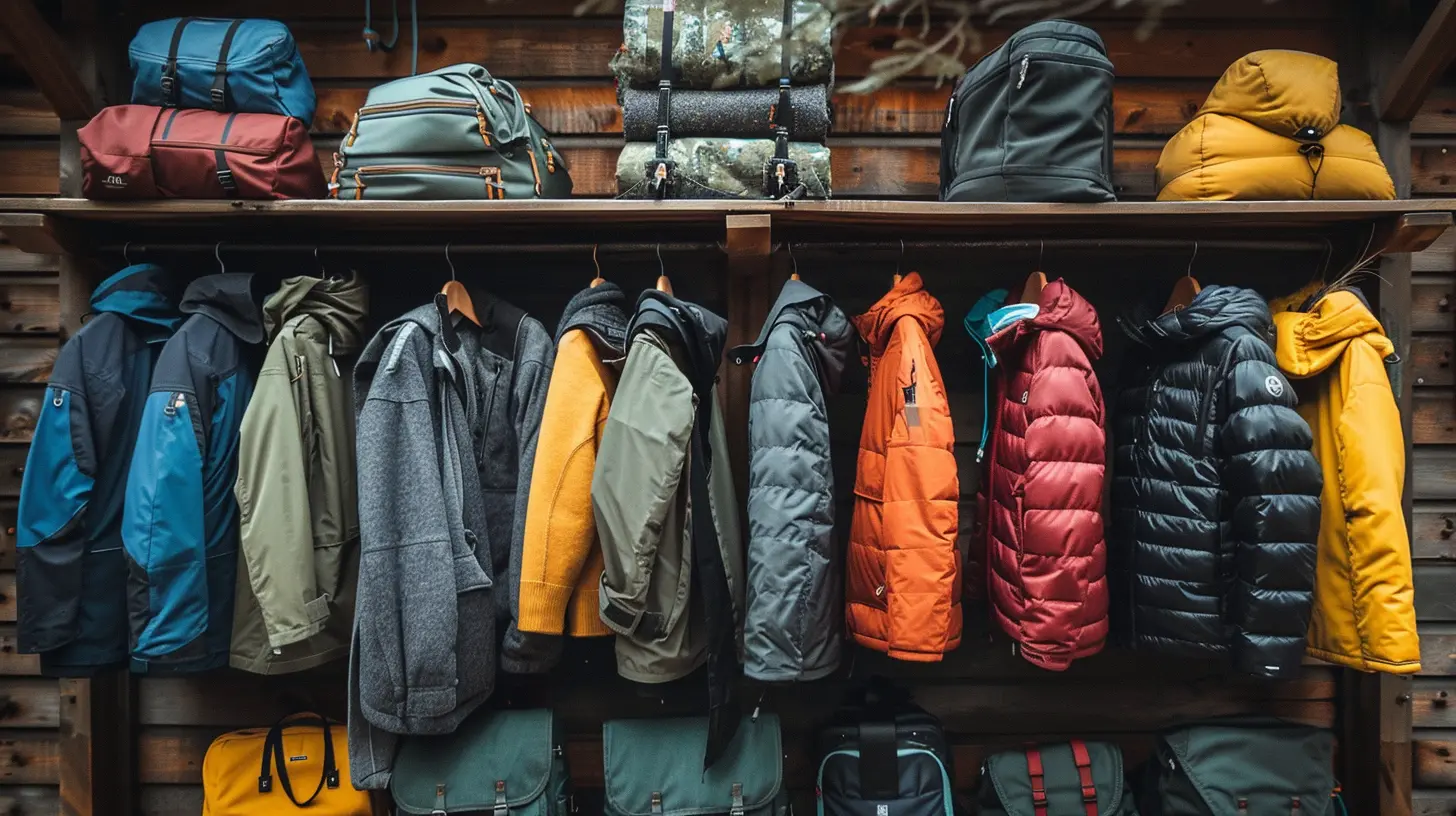How to Layer Your Travel Clothing for Perfect Climate Control
17 July 2025
Packing for a trip can feel like solving a complex puzzle—especially when you’re dealing with unpredictable weather. But here’s the secret: mastering the art of layering can save you from being too hot, too cold, or just plain uncomfortable.
Layering is not just about comfort; it’s also about packing light while still being prepared for anything Mother Nature throws your way. Whether you're trekking through the Alps, exploring bustling city streets, or hitting the beach on a breezy evening, knowing how to layer your travel clothing can make or break your experience.
So, let’s break down how to do it right, step by step.

Why Layering is a Game-Changer for Travelers
You might be wondering—why not just throw on a heavy coat or a thick sweater and call it a day? Because layering gives you flexibility.Instead of gambling on a single bulky outfit, layering lets you adjust to temperature shifts throughout the day. Morning chill? Add a layer. Afternoon heat? Remove one. Evening breeze? Pop it back on. It’s all about adaptability.
Plus, layering helps with:
- Packing light – Fewer items with more versatility.
- Comfort – No more sweating in the sun or freezing in the shade.
- Preparedness – Ready for everything from a heatwave to a cold front.
Now, let’s dive into the essential layers you need and how to wear them for maximum comfort. 
The Three Essential Layers for Perfect Climate Control
1. Base Layer: Your Second Skin
Your base layer is the foundation of your outfit—think of it as your travel armor. This layer sits snugly against your skin and plays the crucial role of moisture management. It wicks away sweat, keeping you dry and comfortable.Best Fabrics for the Base Layer:
- Merino wool – Lightweight, moisture-wicking, and naturally odor-resistant (perfect for long trips).- Synthetic fabrics like polyester or nylon – Quick-drying and breathable, great for active travelers.
- Avoid cotton! – Once wet, it stays wet and makes you feel colder.
When to Wear It:
- Cold weather? Go for thermal base layers to trap body heat.- Warm climates? Use lightweight, breathable fabrics to wick away sweat.
✔ Pro Tip: Opt for neutral-colored base layers—they’ll blend seamlessly with the rest of your wardrobe.
2. Mid Layer: The Insulation Hero
If the base layer is your armor, the mid layer is your shield. It’s responsible for trapping body heat and keeping you warm without adding too much bulk.Best Options for a Mid Layer:
- Fleece jackets – Lightweight, breathable, and warm.- Down or synthetic insulated jackets – Ultra-warm yet compressible.
- Sweaters or hoodies – Cozy, but opt for breathable fabrics.
When to Wear It:
- Cold destinations? A thicker fleece or lightweight puffer jacket will do the trick.- Mild climates? A light sweatshirt or hoodie should suffice.
✔ Pro Tip: Choose a zip-up mid layer – it’s easier to remove if you start heating up.
3. Outer Layer: Your Weather Shield
The outer layer is your first line of defense against wind, rain, or snow. It’s the difference between staying dry and shivering in misery.Best Outerwear Choices:
- Waterproof rain jackets – A must-have for wet conditions.- Windbreakers – Great for blocking chilly gusts without overheating.
- Hard shell jackets – For extreme adventurers in harsh weather conditions.
When to Wear It:
- Rainy or snowy days? A waterproof shell is non-negotiable.- Windy but dry? A lightweight windbreaker is enough.
✔ Pro Tip: Look for packable jackets – they take up less space in your backpack. 
How to Layer for Different Climates
The beauty of layering is that it works everywhere. Let’s break it down by travel scenarios:🌞 Hot and Humid Climates
- Base Layer: Loose, moisture-wicking t-shirt.- Mid Layer: Skip it unless indoors with strong air-conditioning.
- Outer Layer: A lightweight, breathable jacket for occasional rain showers.
❄ Cold and Snowy Climates
- Base Layer: Thermal long-sleeve shirt (merino wool is best).- Mid Layer: A fleece or puffy jacket for insulation.
- Outer Layer: Waterproof and windproof shell.
🍂 Mild or Unpredictable Weather
- Base Layer: Comfortable t-shirt or long sleeve.- Mid Layer: Light hoodie or fleece.
- Outer Layer: Windbreaker or light rain jacket.
✔ Golden rule? Always bring a packable outer layer just in case. 
Smart Packing Tips for Layered Clothing
Now that you know how to layer, here’s how to pack smart without overstuffing your luggage:- Stick to a color scheme – Neutral colors mix and match effortlessly.
- Choose multi-purpose items – A lightweight puffer doubles as both a mid and outer layer in mild weather.
- Invest in compressible clothing – Many jackets and sweaters come with stuff sacks to save space.
- Wear your bulkiest layers in transit – Saves luggage space while keeping you cozy on planes or buses.
✔ Pro Tip: Roll your clothes instead of folding – It minimizes wrinkles and saves room in your suitcase.
Common Layering Mistakes to Avoid
Even seasoned travelers make mistakes when it comes to layering. Here’s what NOT to do:❌ Wearing Cotton as a Base Layer
Cotton traps moisture and can leave you feeling soggy and cold. Stick to quick-drying fabrics instead.❌ Overloading on Layers
Too many layers can make you feel bulky and uncomfortable. The trick is efficient layering, not piling on clothes.❌ Ignoring the Wind Factor
Even in mild temperatures, strong winds can make it feel much colder. A windproof outer layer is key.❌ Forgetting a Versatile Jacket
Weather can change in an instant—always pack at least one lightweight outer layer.✔ Golden Rule: Pack smart, layer wisely, and keep it simple.
Final Thoughts: Mastering the Art of Layering
At the end of the day, layering your travel clothing is all about preparation, efficiency, and comfort. With the right combination of base layers, mid layers, and outer layers, you can easily adapt to any climate without overpacking.So, next time you’re packing for a trip, remember: it’s not about packing more—it’s about packing smart. With a few well-chosen layers, you’ll be ready to take on any adventure, rain or shine!
all images in this post were generated using AI tools
Category:
Travel GearAuthor:

Shane Monroe
Discussion
rate this article
2 comments
Pamela McMillen
Great tips for versatile packing!
November 18, 2025 at 4:18 PM

Shane Monroe
Thank you! I'm glad you found the tips helpful for versatile packing! Safe travels!
Colton Porter
Layering your travel clothes is like building the perfect sandwich: start with a comfy base, add some tasty toppings, and seal it with a stylish outer layer! With the right combination, you’ll be ready for any weather—rain or shine. Let’s keep those travel vibes deliciously cozy!
July 25, 2025 at 4:06 AM

Shane Monroe
Absolutely! Layering clothes is all about comfort and style, just like crafting the ideal sandwich. With the right layers, you can effortlessly adapt to any climate while staying cozy and fashionable. Happy travels!


